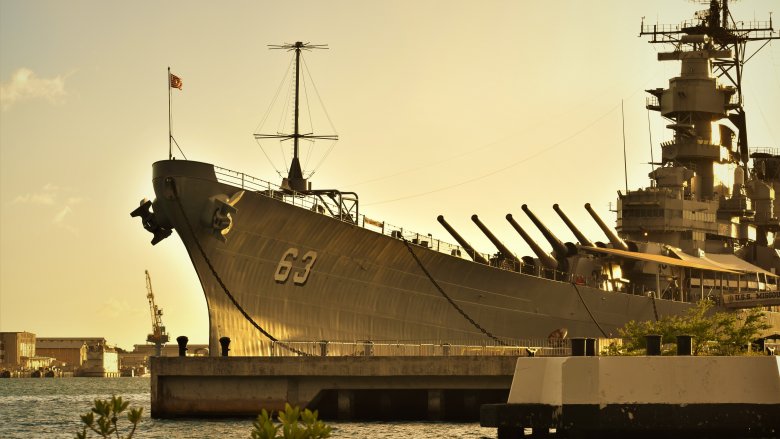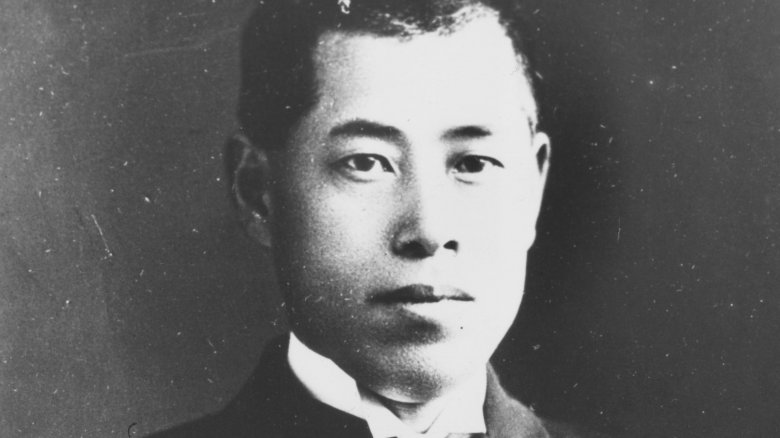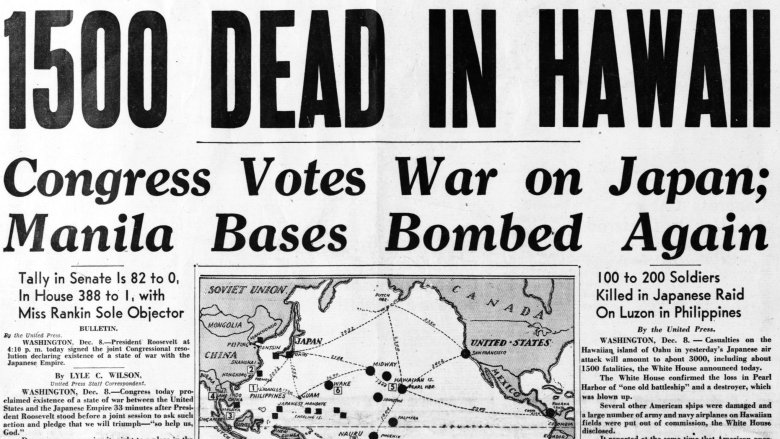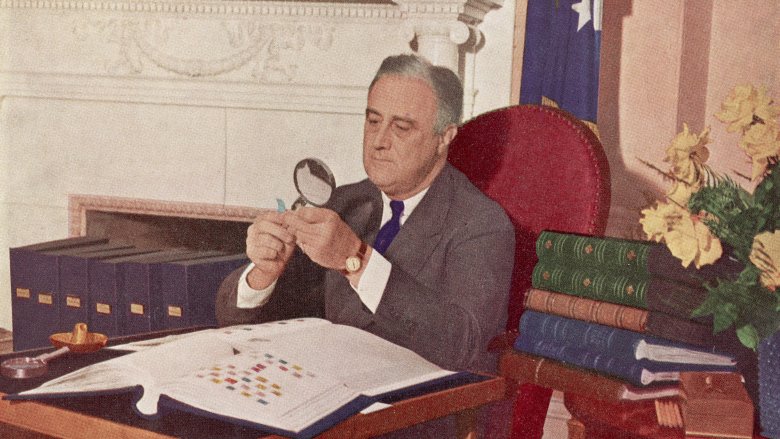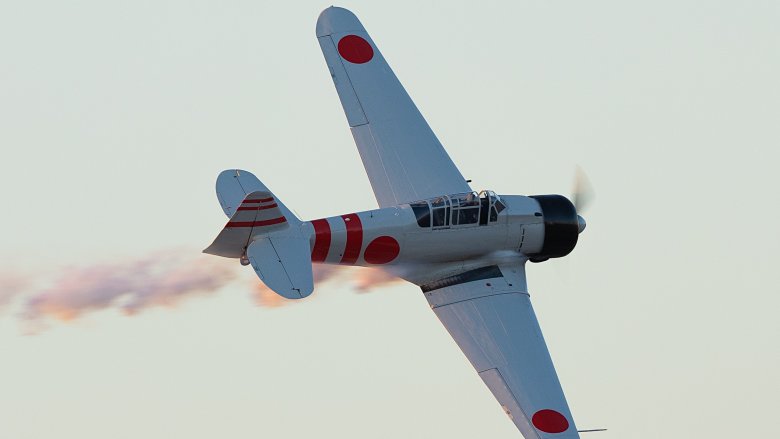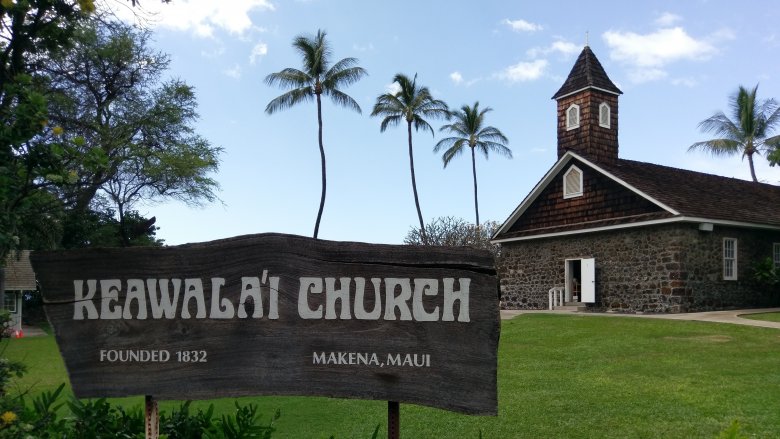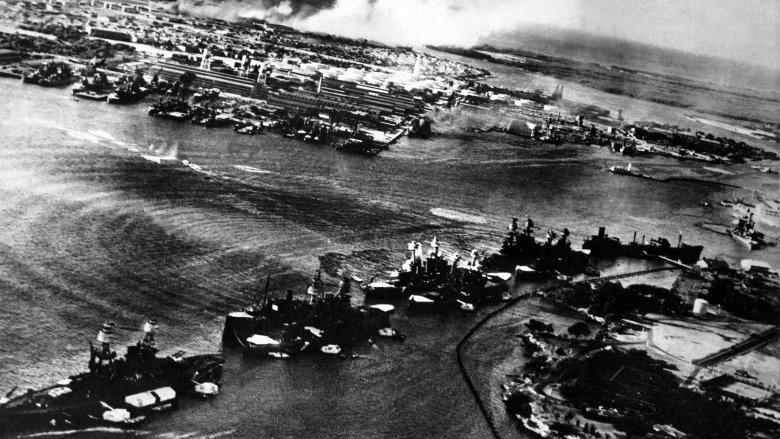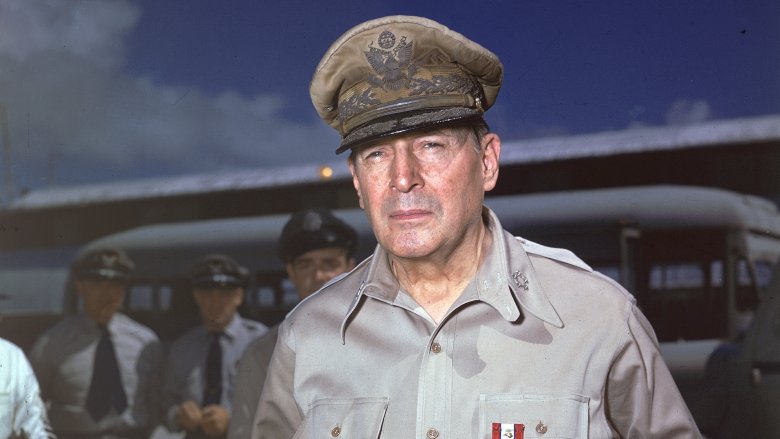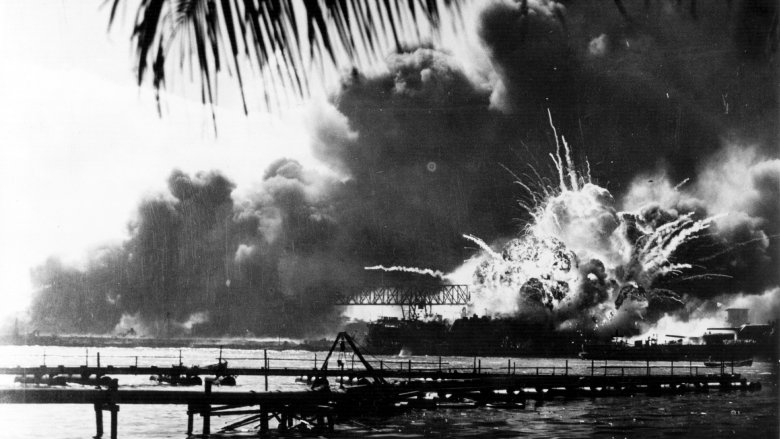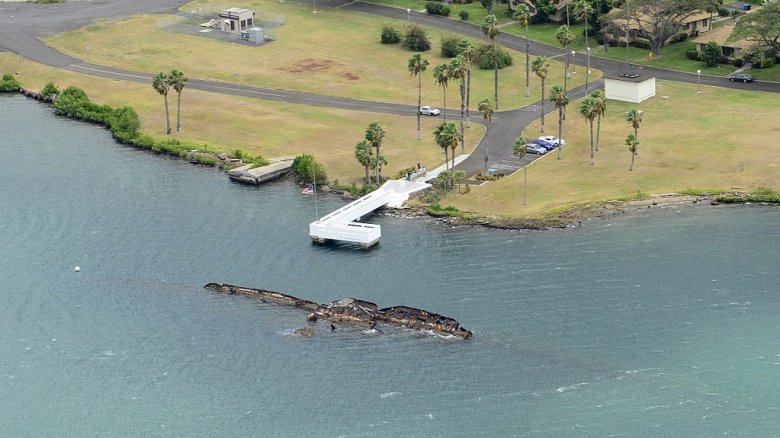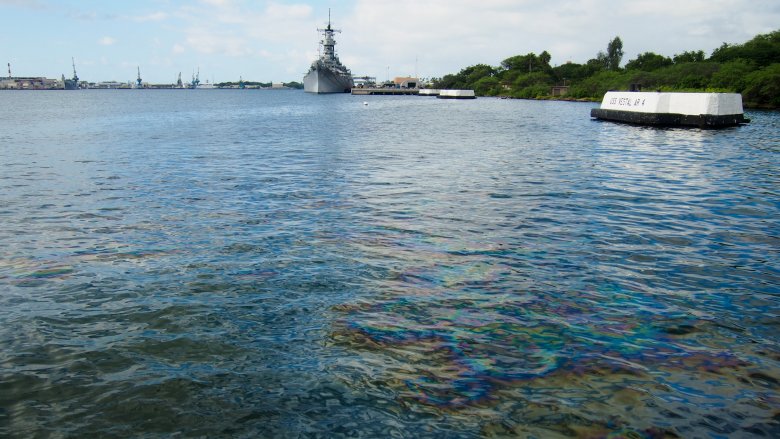The Most Disturbing Part Of The Pearl Harbor Attack Isn't What You Think
The most disturbing part of Pearl Harbor for most people will be the number of casualties and the fact it caught everyone in the government and military off-guard. Because the day that would live in infamy was completely unexpected, 2,403 Americans were killed and another 1,178 were wounded.
But all that death gets even worse when you find out more details of the notorious World War II attack. The Japanese assault on Pearl Harbor was an all-in gamble with a ton of moving parts that should have been just about impossible to pull off, so it was kind of a miracle the plan didn't wreck itself. And that whole thing about it being a complete surprise? Well, it shouldn't have been that surprising. It gets even worse when you consider the knock-on effects the attack on Pearl Harbor had. From the environment to how America handled other attacks going forward, the effects of the bombing of Pearl Harbor were felt long after the smoke blew away.
Not everyone in the Japanese government supported the plan
Pearl Harbor probably shouldn't have happened in the first place. Bizarrely, the person who masterminded the whole thing didn't actually want to attack Hawaii. According to the New York Times, Admiral Isoroku Yamamoto felt there was no way Japan could win a war against the United States. Yes, he came up with the plan to launch a sneak attack on Pearl Harbor, but he said it was "conceived in desperation."
Yamamoto had lived in the U.S. for years, even attending Harvard. He desperately tried to stop his government from making an alliance with Nazi Germany. In Japan, he was seen as a stooge of America, to the point that some people wanted to assassinate him. When given the job of planning an attack on the U.S., he lamented that he'd been "assigned the mission diametrically opposed" to his personal beliefs. But he did what he was told.
The Pearl Harbor Visitors Bureau says there were others who were against the attack. Admiral Osami Nagano, chief of the Naval General Staff, "stiffly resisted the proposed raid." But he presented the plan to Emperor Hirohito, who approved it. Still, people even tried to get the emperor to change his mind, including his own brother, Prince Takamatsu, and the Lord Keeper of the Privy Seal of Japan, one of his closest advisers. And just weeks before the attack, Yamamoto was still hoping it wouldn't happen, saying he wished the emperor would decide against war since Japan had little chance of success.
A newspaper article might have antagonized Japan
In 1941, neither the U.S. nor Japan actually wanted to go to war with each other ... yet. Plans were definitely being put in place on both sides, and an eventual conflict had become pretty inevitable, but it was to the advantage of both countries to put it off a bit longer. According to History on the Net, Japan was low on vital supplies like oil, iron, and food. America, on the other hand, didn't have as many fighter planes and warships as their possible opponent and wanted to stall in order to catch up on the military side.
Then something ridiculous happened. While America and Japan were still negotiating diplomatically and U.S. officials were specifically chastising their counterpart's aggressive stance, the magazine United States News published an inflammatory article, "showing just how easy it would be for United States B-17 bombers to blow Japan off the map in case of trouble." It said America had wartime levels of the bombers at seven locations, all within attacking distance of Tokyo. The article claimed the planes could travel 6,000 miles and could easily drop incendiary bombs on important cities and factories that were made of rice-paper and wood.
The information in the article was totally wrong (B-17s didn't have that kind of range for one thing), but the Japanese didn't know that. The article almost certainly made it to Asia, and just five weeks later, the Japanese attacked Pearl Harbor. It's more than possible United States News thoughtlessly jump-started Japanese plans before America was ready.
Yes, there were warnings
There is a conspiracy theory that FDR knew Japan was going to attack Pearl Harbor and let it happen so Congress would agree to join the war. While this isn't true, what is true is that the Americans government and military absolutely should have known, and the fact they didn't is almost unbelievable.
A declassified document shows that three days before Pearl Harbor, Roosevelt received a 26-page memo detailing how Japan was looking to start "open conflict" in Hawaii, reports the Telegraph. A historian says that, just like with 9/11, the government was unprepared because they had a "failure of imagination" and were "kind of in denial because they didn't think anybody would be as audacious to move an army thousands of miles across the Pacific, stop to refuel, then move on to Hawaii to make a strike."
In the months before the attack, Admiral James Richardson warned about moving the whole fleet to Pearl Harbor, saying there were "vulnerabilities" that would leave it open to attack, according to the Pearl Harbor Visitors Bureau. He was ignored and replaced. He wasn't the only one. The Trumpet says "the chief of naval intelligence was replaced because he insisted that Pearl Harbor should be warned of impending attack." In the year before, a Peruvian envoy in Tokyo, a top British agent, a Korean agent, and a report by the navy itself all informed various government officials that Pearl Harbor was going to be attacked. Yet, somehow, the military was completely unprepared.
The attack shouldn't have been possible
To be fair to the American government and military, there was a good reason they didn't think Japan would attack Pearl Harbor: It should have been impossible. According to the U.S. Naval Institute, yes, the U.S. did things wrong. But more important and often overlooked were all the things that had to go right for the Japanese. Apparently, "without the detailed planning and nearly flawless execution of the preliminaries, the attack would have never succeeded."
Just three months before the attack, the Japanese military realized they had "technical and operational shortcomings that needed to be fixed" if they wanted to triumph. They also needed to do this without the U.S. finding out. Japan knew the U.S. was monitoring their ships' radio messages, so they had to devise a way to hide their plans, including using a special cypher. Had America cracked it, they might have learned about the attack. On the other hand, Japan needed to keep getting and correctly deciphering intelligence from U.S. radio messages, especially those from Pearl Harbor. And information about the attack had to be contained, specifically not getting to the ears of any foreigners.
This was all on top of needing good weather on the day, the fact the distance of the attack was unheard of, and America needed to make a few mistakes as well. Yet it all happened. Everything the Japanese did came together, luck was with them, and America screwed up enough to make an audacious sneak attack come together almost perfectly.
The Japanese picked a Sunday on purpose
The date of the Pearl Harbor attack was planned very carefully, and the official Visitors Bureau for the site says that included the day of the week. Japan had done their research, and they knew that Sunday morning meant a whole lot of soldiers would be at church off-base, not ready to defend their ships at a moment's notice. (A Gallup poll from 1940 found only about 4 out of 10 Americans attended church every week, but that would still be enough for a significant advantage for the Japanese.) This also increased the chances the attack would stay a surprise until the last minute. Religion was quite literally used against Pearl Harbor as a weakness.
Even those in the military who didn't attend church weren't necessarily going to be ready to fight on a "quiet Sunday morning." Attacking on the weekend meant lots of people were also sleeping in and relaxing. This is especially evident when you look at one of the four pilots who managed to get a plane in the air to defend Pearl Harbor. According to We Are The Mighty, Lt. Phil Rasmussen was still asleep when the attack started at 7:55 a.m. Extremely groggy, he got out of bed, grabbed a pistol, hopped into an outdated plane that hadn't been damaged yet, and shot down a Japanese fighter before being forced to land, all while still in his pajamas. He's immortalized, pajamas and all, in the U.S. Air Force museum.
The battleships were sitting ducks
America's battleships were the country's "strategic center of gravity in the Pacific," according to the Naval History and Heritage Command. There were nine of them, all named after states, and they were vital to America holding off any aggression from Japan. And Japan already had one more battleship than the U.S. did, so keeping those nine in good order was vital. On December 7, one, the U.S.S. Colorado, was getting an update in California. But the other eight were all in Hawaii, with seven of them lined up right next to each other in "Battleship Row." The eighth wasn't far off, in drydock. For a Japanese force that was desperate to destroy them, they couldn't have asked for an easier target. The battleships were sitting ducks. Twenty-four torpedo planes attacked the boats, with 21 out of 29 warheads hitting their marks.
The majority of people killed at Pearl Harbor died when the Japanese bombers sank the Arizona, which the official Visitors Bureau says was one of the "first to fall." The Oklahoma also sank. The National Park Service says a tenth "demilitarized" battleship, the U.S.S. Utah, which was on the other side of the island, went down as well. None of them could be salvaged. While every battleship sustained damage, the Maryland and the Tennessee were repaired within weeks. Three others eventually returned to service, although those all took a year or more to fix. This gave Japan "absolute superiority" for the next few months.
There was a 'second Pearl Harbor' a few hours later
December 7, 1941, might have been a day that would live in infamy, but very few people know that December 8 should have been as well. Ten hours after the Japanese completely surprised everyone in Hawaii, they also attacked Clark Field in the Philippines, resulting in "a catastrophe almost as devastating as Pearl Harbor," according to National Interest.
General Douglas MacArthur was actually handed a huge advantage. The two attacks were supposed to be simultaneous, but bad weather delayed the Japanese planes headed to the Philippines. MacArthur found out Pearl Harbor had been attacked within an hour, and he knew his base could be in danger. But he blew it. Instead of preparing to retaliate or moving his planes to safer locations, MacArthur did nothing. Even though Maj. Gen. Lewis Brereton asked to immediately launch his B-17s against Japanese forces in Taiwan, MacArthur stalled.
At noon, Japanese bombers finally showed up, expecting the Americans to be in the air ready to fight. Instead, all the planes were on the ground, lined up close together. It took mere minutes for the Japanese to smash the "backbone of America's Philippine defenses." In the end, about half the air fleet was destroyed. The U.S. lost 80 men, with 150 wounded.
Planes were the most effective way of protecting the islands, and the fact they were wiped out meant subsequent Japanese landings were "mostly unhindered by American airstrikes." By May, the American and Philippine troops in the country had all surrendered to the Japanese.
America didn't learn anything
The U.S. lost a lot of lives and equipment in these two attacks. You'd think someone would have learned not to underestimate what the Japanese could do at long distances. Instead, the military took ages to really recognize the threat. It was a ridiculous enough mistake that Japan actually managed to attack Pearl Harbor a second time.
According to the Sextant, the December 7 attack had been a victory for Japan, but not the complete victory they wanted. They'd failed to destroy any aircraft carriers, didn't touch Hawaii's oil reserves, and barely did any damage to important naval infrastructure. To fix these mistakes, Japan decided to attack the exact same place again.
Using two new long-range "flying boats," the planes had to fly an "audacious" 4,800 mile round trip, the longest distance run of the whole war, per Stars and Stripes. This time the attack took place at night, with a full moon to guide the pilots to their targets. While this was a much smaller raid, if they had succeeded, the attack would have been crippling to the U.S. Instead, Japan's luck ran out. Unexpected bad weather meant the pilots had to split up and couldn't see what they were supposed to be attacking. One dropped his bombs into the ocean, while the other hit the side of a volcano. The only damage was a few broken windows.
After this second attack, the U.S. finally got a clue and changed their navel strategy for the rest of the war.
A child didn't get a funeral for 62 years
Obviously, the loved ones of the sailors who died at Pearl Harbor suffered an unimaginable loss, but for one family, there was a slightly different, but still extremely painful, loss on the day. One of the ships that sank during the attack was the U.S.S. Utah. According to the U.S. Navy, 64 men went down with the battleship, and only four of their bodies were ever recovered. But the 60 sailors still down there have an unexpected companion: the remains of a baby girl.
Nancy Lynne Wagner and her twin sister were born prematurely in 1937. The sister lived, but Nancy died two days later. Her body was cremated, and her father, Chief Yeoman Albert Wagner, put her urn in his locker on the Utah, planning to scatter her ashes at sea once a chaplain was on board and the boat left Pearl Harbor. Sadly, he never got a chance. While Chief Wagner survived the Japanese attack, his family still faced the grief of losing Nancy's remains before they could give her the goodbye they wanted.
While a memorial for the battleship and lost crew was built in 1972, baby Nancy never got a funeral service. Finally, in 2003, the surviving twin sister, Mary, along with other family and friends, gathered at the location for an official goodbye. After the funeral service, Mary said she was grateful that her sister had "finally received God's blessing" and that the "courageous crew of U.S.S. Utah [had] watched over" Nancy for 62 years.
The ecology of the harbor was destroyed
The wreck of the U.S.S. Arizona is considered sacred since it's the final resting place of more than 1,100 sailors and Marines. This means the military is hesitant to mess with it at all. That could become a serious problem, since the wreck also contains 500,000 gallons of oil.
According to the Belleville News-Democrat, the Arizona leaks more than 2 gallons of oil a day. It's enough that visitors to the memorial can see the oil slick on the water. At that rate, the ship will keep leaking for the next 540 years. Don't worry. That's probably not going to happen, but the reality will be so much worse. The Washington Post says experts believe the hull will deteriorate way before then, and all those hundreds of thousands of gallons of oil will come streaming out into the harbor, an event they describe as "catastrophic" and "inevitable."
But the Huffington Post reports Pearl Harbor is already an environmental disaster. In 1992, it was added to the Environmental Protection Agency's National Priority List of hazardous waste sites. By 1998, the health department had to start warning people that eating fish or shellfish caught in the harbor was a very bad idea. There are over 700 "documented areas of contamination," many of which date back to World War II. Over the years, 5 million gallons of fuel spilled into Pearl Harbor, making it half the size of the infamous Exxon Valdez spill. The resulting oil plume is the size of 15 football fields.
